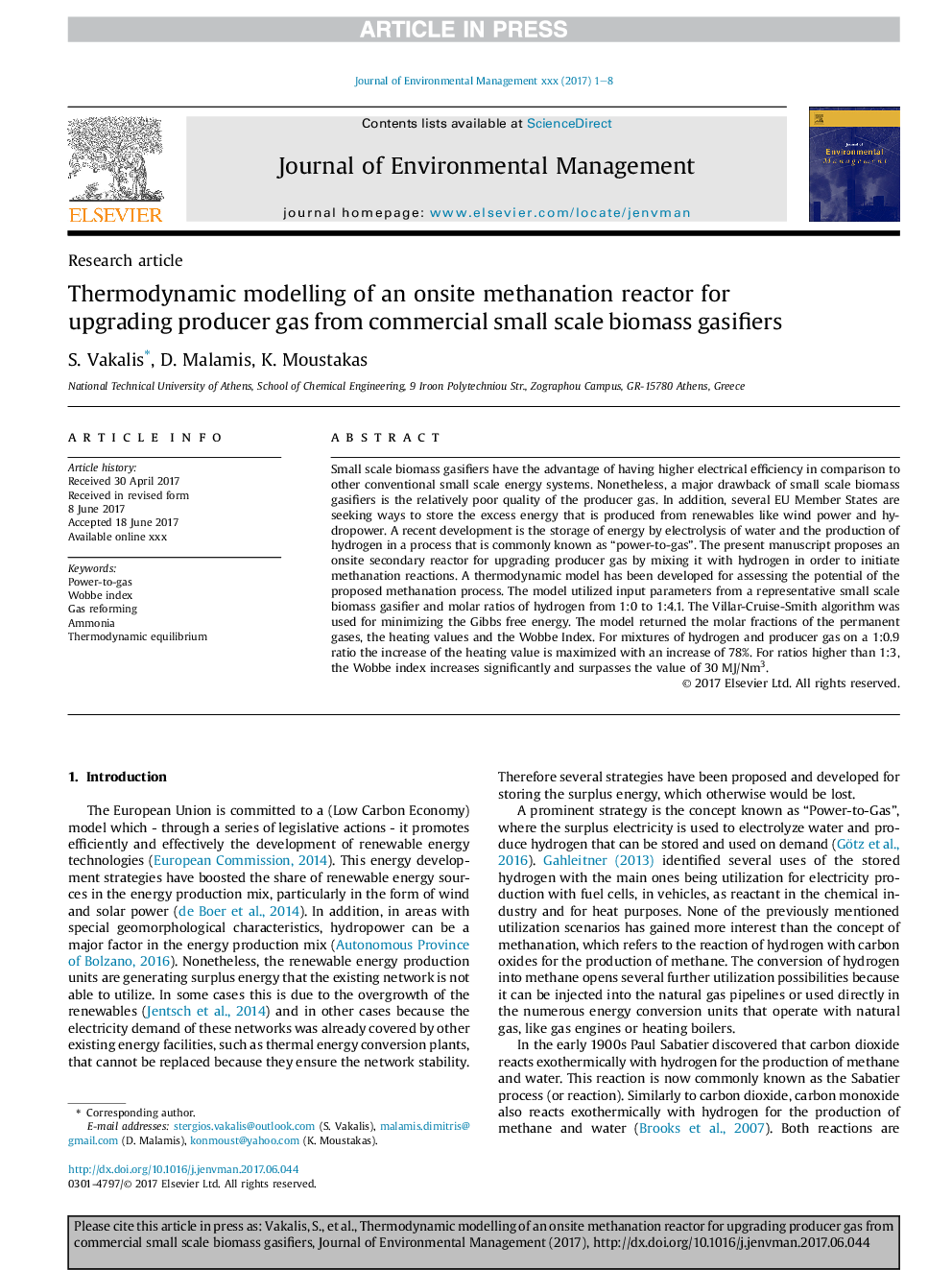| Article ID | Journal | Published Year | Pages | File Type |
|---|---|---|---|---|
| 7477245 | Journal of Environmental Management | 2018 | 8 Pages |
Abstract
Small scale biomass gasifiers have the advantage of having higher electrical efficiency in comparison to other conventional small scale energy systems. Nonetheless, a major drawback of small scale biomass gasifiers is the relatively poor quality of the producer gas. In addition, several EU Member States are seeking ways to store the excess energy that is produced from renewables like wind power and hydropower. A recent development is the storage of energy by electrolysis of water and the production of hydrogen in a process that is commonly known as “power-to-gas”. The present manuscript proposes an onsite secondary reactor for upgrading producer gas by mixing it with hydrogen in order to initiate methanation reactions. A thermodynamic model has been developed for assessing the potential of the proposed methanation process. The model utilized input parameters from a representative small scale biomass gasifier and molar ratios of hydrogen from 1:0 to 1:4.1. The Villar-Cruise-Smith algorithm was used for minimizing the Gibbs free energy. The model returned the molar fractions of the permanent gases, the heating values and the Wobbe Index. For mixtures of hydrogen and producer gas on a 1:0.9 ratio the increase of the heating value is maximized with an increase of 78%. For ratios higher than 1:3, the Wobbe index increases significantly and surpasses the value of 30Â MJ/Nm3.
Related Topics
Physical Sciences and Engineering
Energy
Renewable Energy, Sustainability and the Environment
Authors
S. Vakalis, D. Malamis, K. Moustakas,
